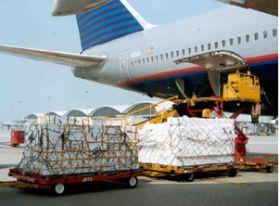
The International Air Transport Association (IATA) this week released data for global airfreight markets showing that demand, measured in freight tonne kilometers (FTKs), rose 2 per cent in September 2018, compared to the same period the year before.
This pace of growth was relatively unchanged from the previous month but was less than half the five-year average growth rate of 5.1 per cent, the IATA said.
Freight capacity, measured in available freight tonne kilometres (AFTKs), grew by 3.2 per cent year-on-year in September 2018. This was the seventh month in a row that capacity growth outstripped demand, according to the IATA report.
Commenting on the September results, Alexandre de Juniac, IATA's director general and CEO said: 'Demand for air cargo grew 2 per cent in September - well below the five-year average of 5.1 per cent. Weakening order books and longer delivery times are undercutting the need for airfreight in many traditional markets. But there is also some positive news. For example, strong consumer confidence goes hand-in-hand with expanding international e-commerce trade to give air cargo a boost,” he said.
“The bigger message for the sector is the need to modernise processes. There is some progress with the electronic air waybill becoming the default document on enabled trade lanes from 2019. But there is much more that must be done with governments and the supply chain to bring air cargo processes into the modern era,” de Juniac added.
Regional Performance
All regions reported year-on-year demand growth in September 2018, except Africa, which contracted, according to the IATA.
Asia-Pacific airlines saw demand for airfreight grow by 1.2 per cent in September 2018 compared to the same period last year. This was a slight decrease from the previous month.
Weaker manufacturing conditions for exporters, particularly in Japan, China and Korea impacted the demand, as did disruptions to freight operations from typhoon activity. As the largest freight-flying region, carrying more than one-third of the total, the risks from protectionist measures are disproportionately high, IATA said. Capacity increased by 1.2 per cent.
European airlines posted a 1.5 per cent increase in freight demand in September 2018 compared to the same period a year earlier. Capacity increased by 0.9 per cent year-on-year. International air cargo demand declined sharply in September. This contributed to year-on-year international air cargo demand falling to a 30-month low of 1.2 per cent in September. The IATA said it is too soon to say if this is the start of a wider weakening in demand.
The IATA represents some 290 airlines comprising 82 per cent of global air traffic.






No comments yet